These vegan crème brûlée doughnuts are what dreams are made of! Filled with silky smooth vanilla custard and topped with a crunchy caramel glaze, you'll have so much fun cracking and digging into these delicious donuts!
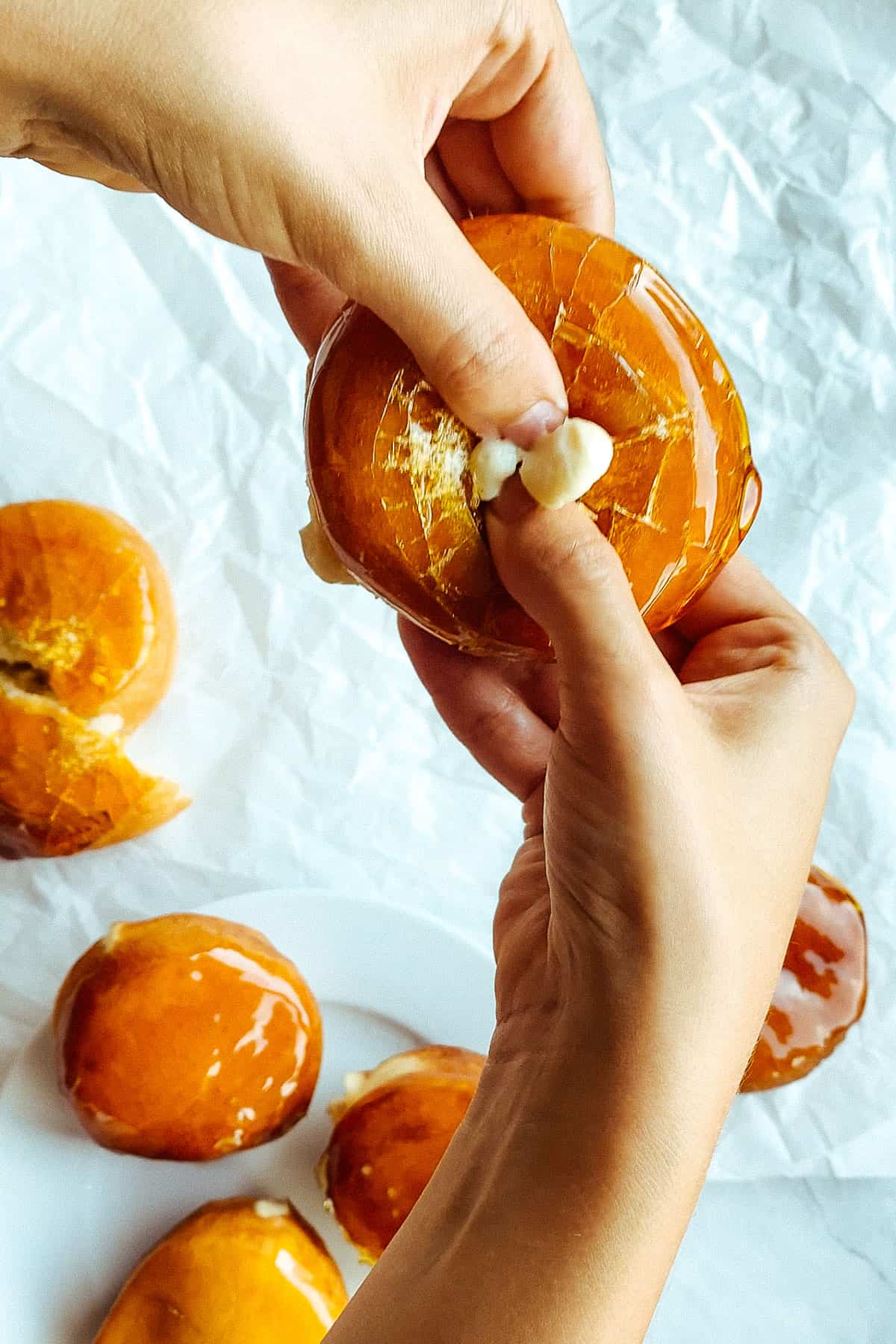
Jump to:
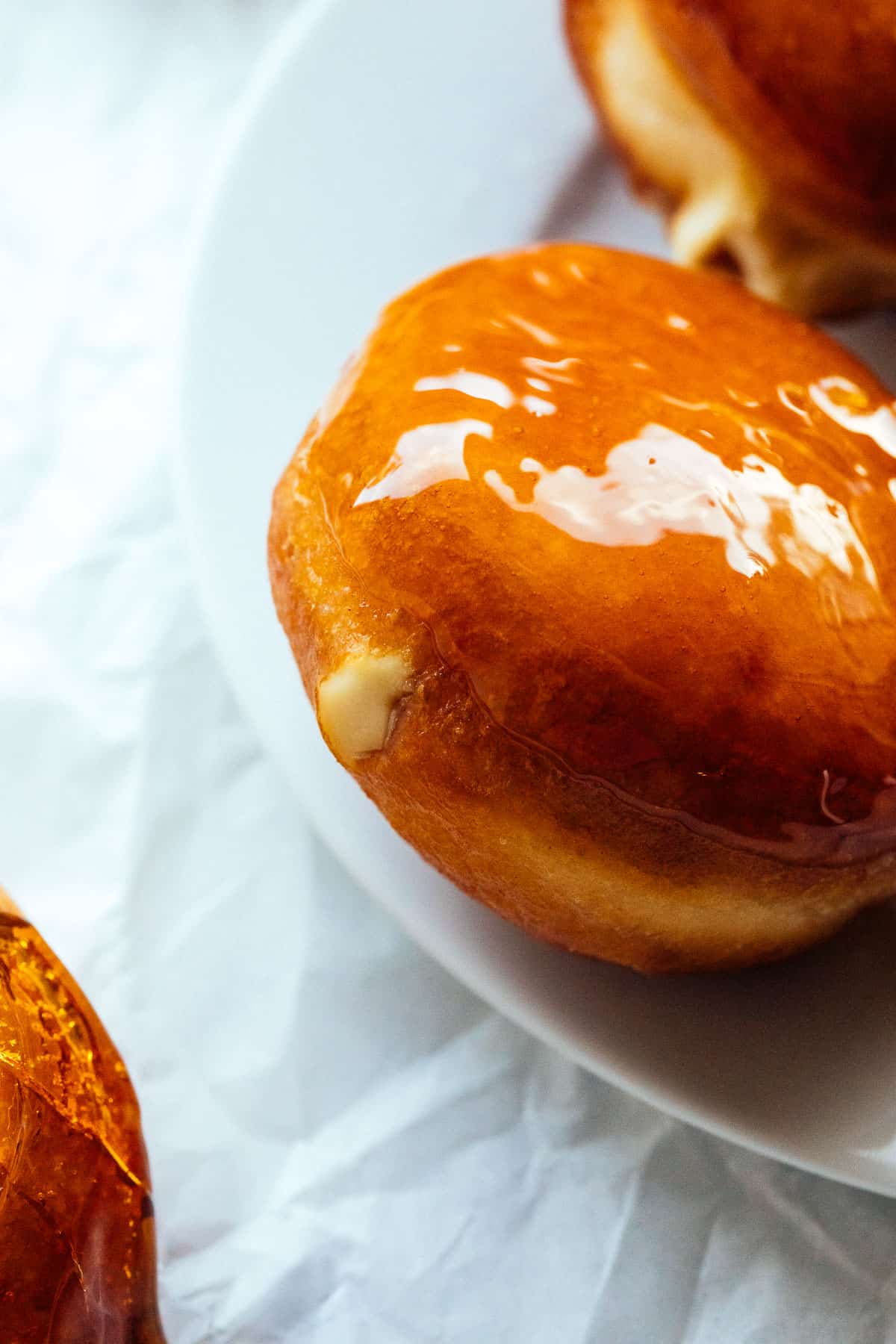
🍮 Crème Brûlée Doughnuts
What's more fun than a two-in-one dessert? Cruffins, éclair cakes, chouxnuts, baklava cheesecakes, cronuts... hybrid delicacies are all the rage lately.
But is the whole really more than the sum of its parts? For these crème brûlée donuts, maybe it is!

Actually, we're using crème brûlée loosely, but it's still a good description that makes us think of cracking the top with a spoon.
Also, crème brûlée is a custard dessert that is often, well, brûlée'd. Once the vanilla custard sets and cools in the fridge, you sprinkle some sugar on top and flame it with a blowtorch.
We can still do that here by torching the caramel—tastes even better this way.

I first had crème brûlée doughnuts at Donut Friend in Los Angeles a few years ago and wanted to recreate them ever since. It's a long recipe due to the yeasted dough but you can make that and the pastry cream one day ahead to break up the work.
🍯 Ingredients
Yeast Doughnuts
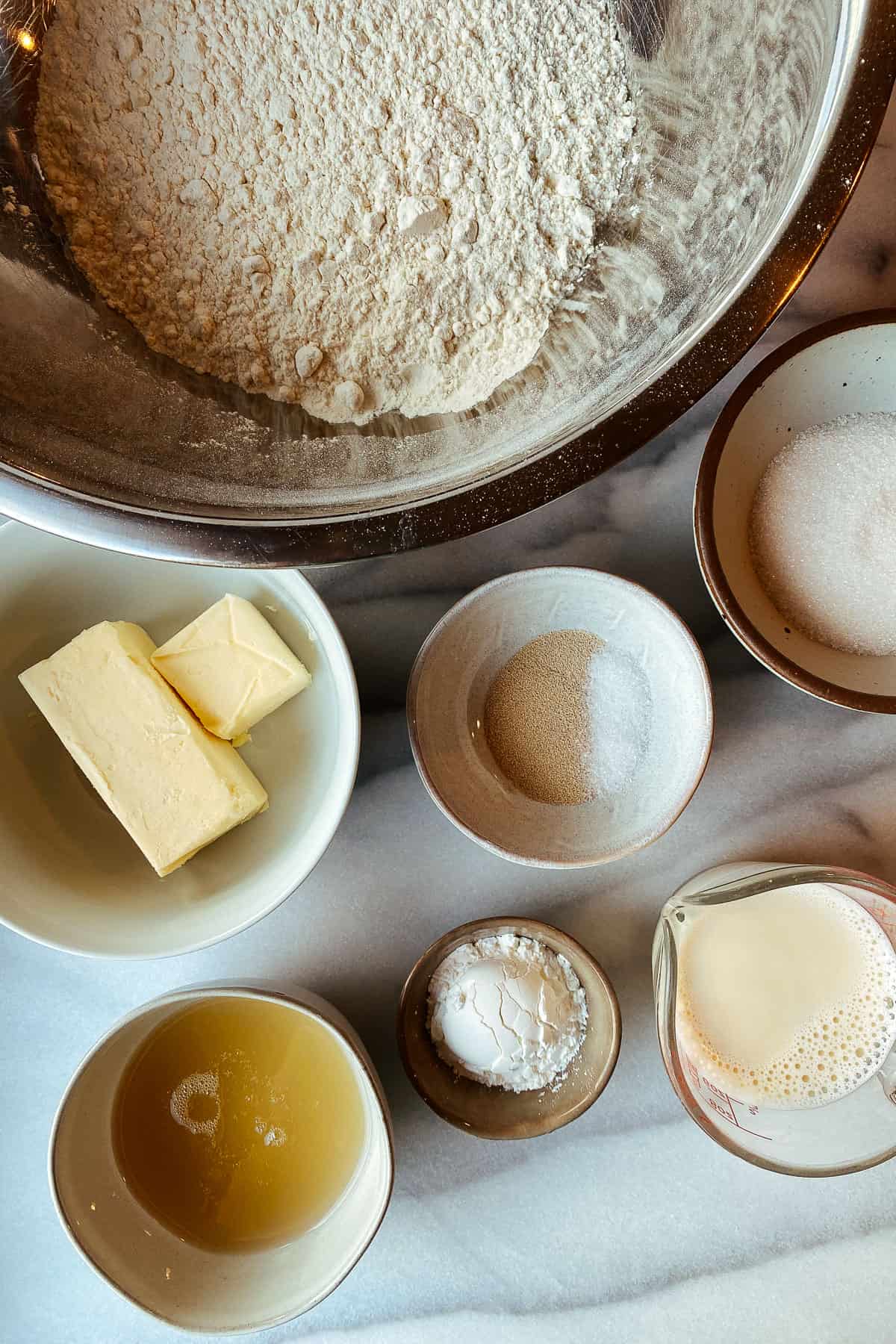
- All-Purpose Flour: I used King Arthur's unbleached AP flour that has 11.7% protein content. You may also use bread flour which is higher in protein and therefore provides more elasticity to the dough to trap more air pockets and make the doughnuts even softer.
- Instant Yeast: Feel free to use active dry yeast as well. In either case, make sure the yeast isn't expired and still alive.
- Aquafaba: This diluted "chickpea broth" has dissolved starch and saponins which will slow the collapse of foam and provide stabilization.
- Cornstarch: Aquafaba isn't a great binding agent on its own so we need to add another source of starch. You may use arrowroot starch (double the weight) instead if necessary.
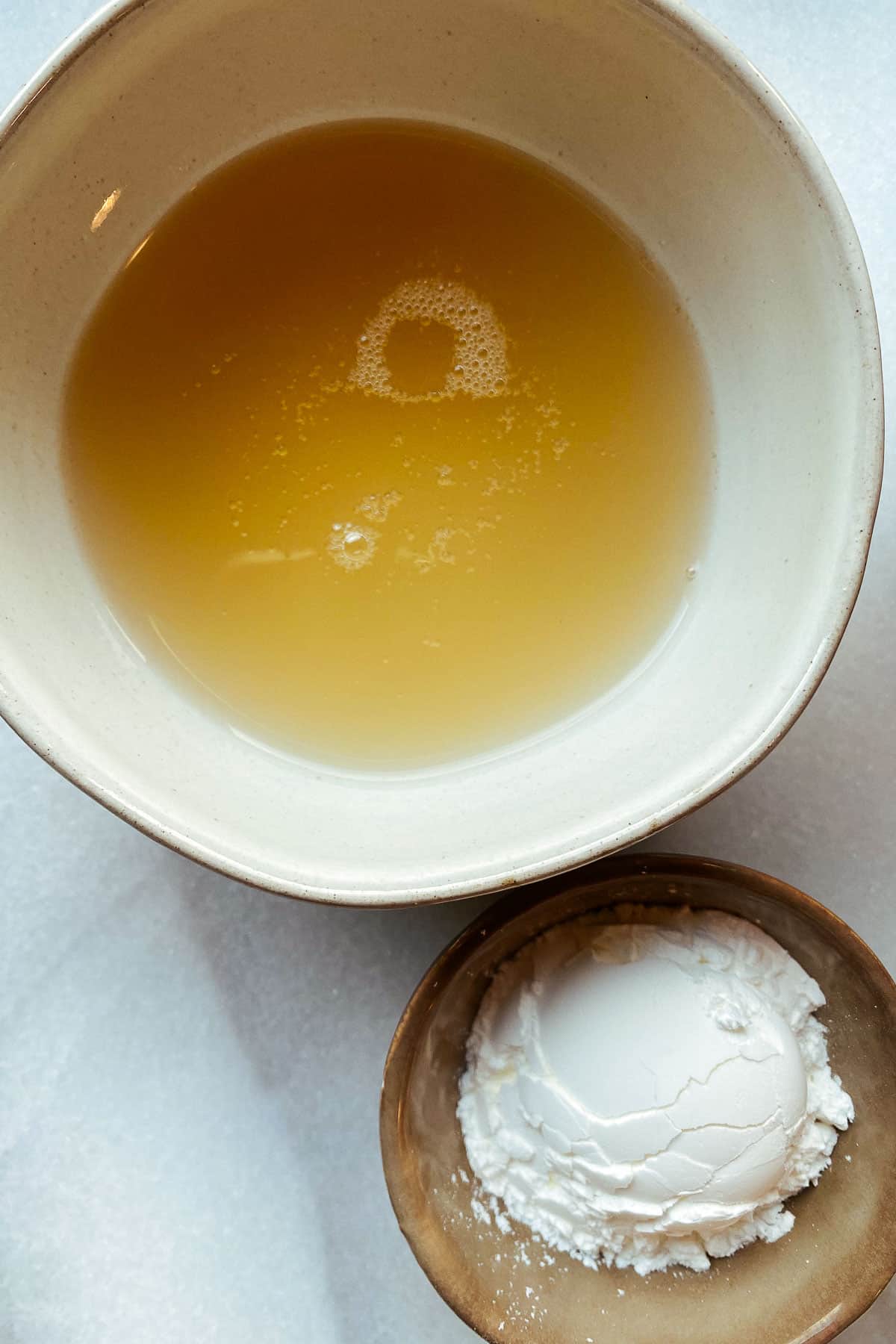
- Sugar: We'll use granulated sugar. For a 100% vegan donut, pay attention to the kind of sugar you're using. In the U.S., the sugar will definitely be vegan if it's organic, “unrefined”, or made from beets.
- Salt: The recipe is written for regular table salt. Double the volume if using Kosher (same weight).
- Non-dairy milk: I use soy milk where the only ingredients are soybean and water. Any unflavored, unsweetened plant milk should work. Just be mindful of options with strong aromas such as coconut milk as they may impart some flavor.
- Vegan Butter: Room temperature butter added towards the end of kneading will enrich the dough for more fluffy doughnuts. I used Earth Balance salted sticks. If using unsalted butter, add a pinch more table salt to the dough.
- Frying Oil: Using an oil with a high smoke point is essential. I used vegetable oil. Safflower, peanut, soybean, sunflower, or canola oils will work as well.
Pastry Cream
This vanilla pastry cream is extremely flavorful. You won't believe how quickly it comes together (in under 10 minutes!!) in a microwave.
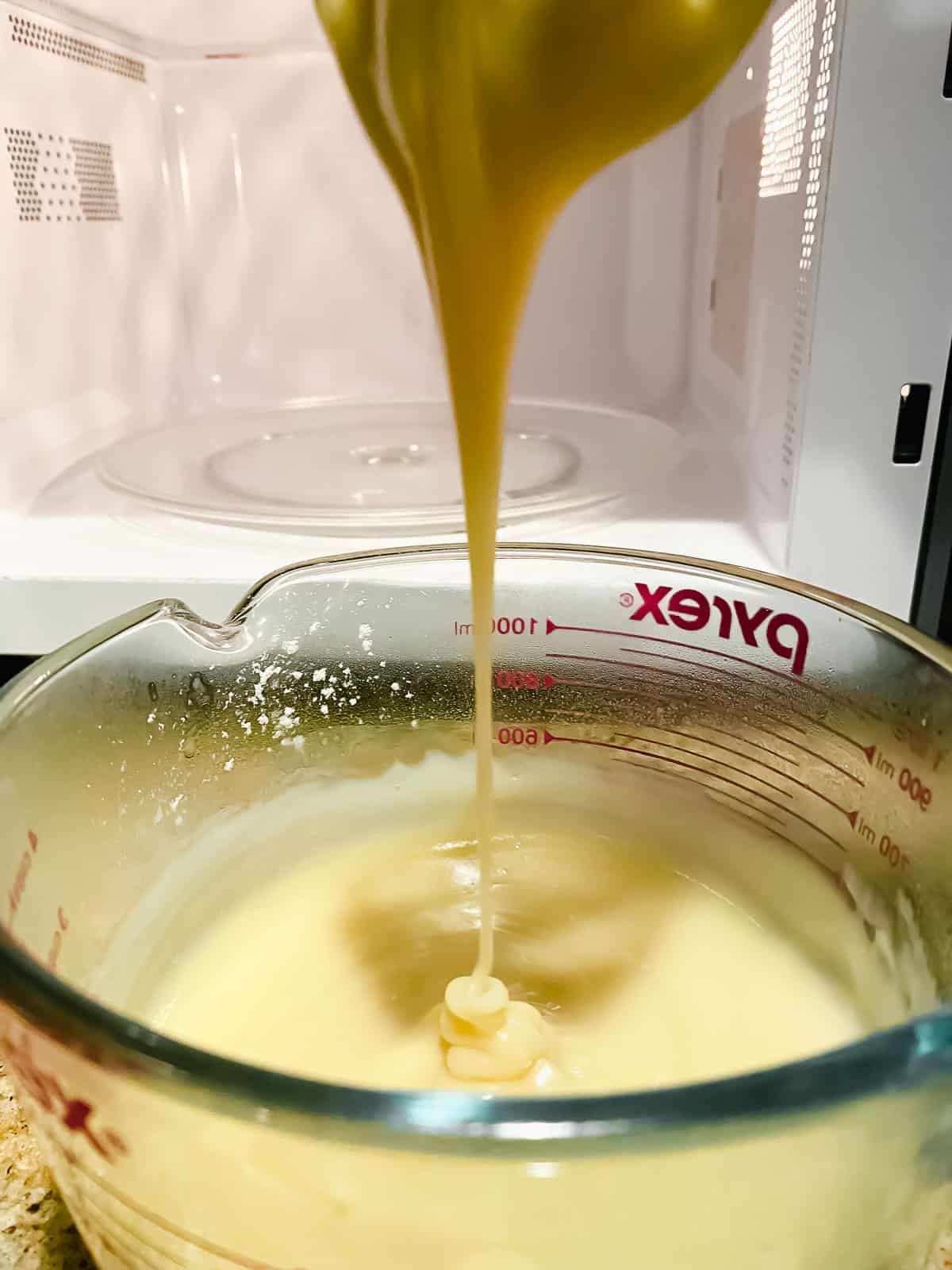
- Sugar: For 100% vegan pastry cream, pay attention to the kind of sugar you're using. Many refined sugars are processed with bone char to take on a bright white color. In the U.S., the sugar will definitely be vegan if it's organic, “unrefined”, or made from beets.
- Cornstarch: We're using just enough cornstarch for the custard to set while still being creamy.
- Nutritional Yeast: Yes, this sounds weird. But trust me, its flavor really makes up for the lack of eggs. I promise you won't taste it in the custard at all.
- Vegan Butter: My favorite butter plant-based butter for baking projects is Earth Balance. If using unsalted, make sure to add another pinch of salt.
- Vanilla Extract: We need vanilla for its flavor. You may also use a scraped vanilla bean or vanilla bean paste instead.
- Plant Milk: I like to use unsweetened, unflavored soy or cashew milk in most baking projects. They are creamy without imparting too much flavor (looking at you, coconut). If using sweetened milk, make sure to adjust the amount of sugar.
- (optional) Ground Turmeric: This is only to color the custard a bit yellow/orange. Be careful not to go overboard because turmeric has a really strong flavor! Alternatively, you may use a vegan food dye.
Caramel Top
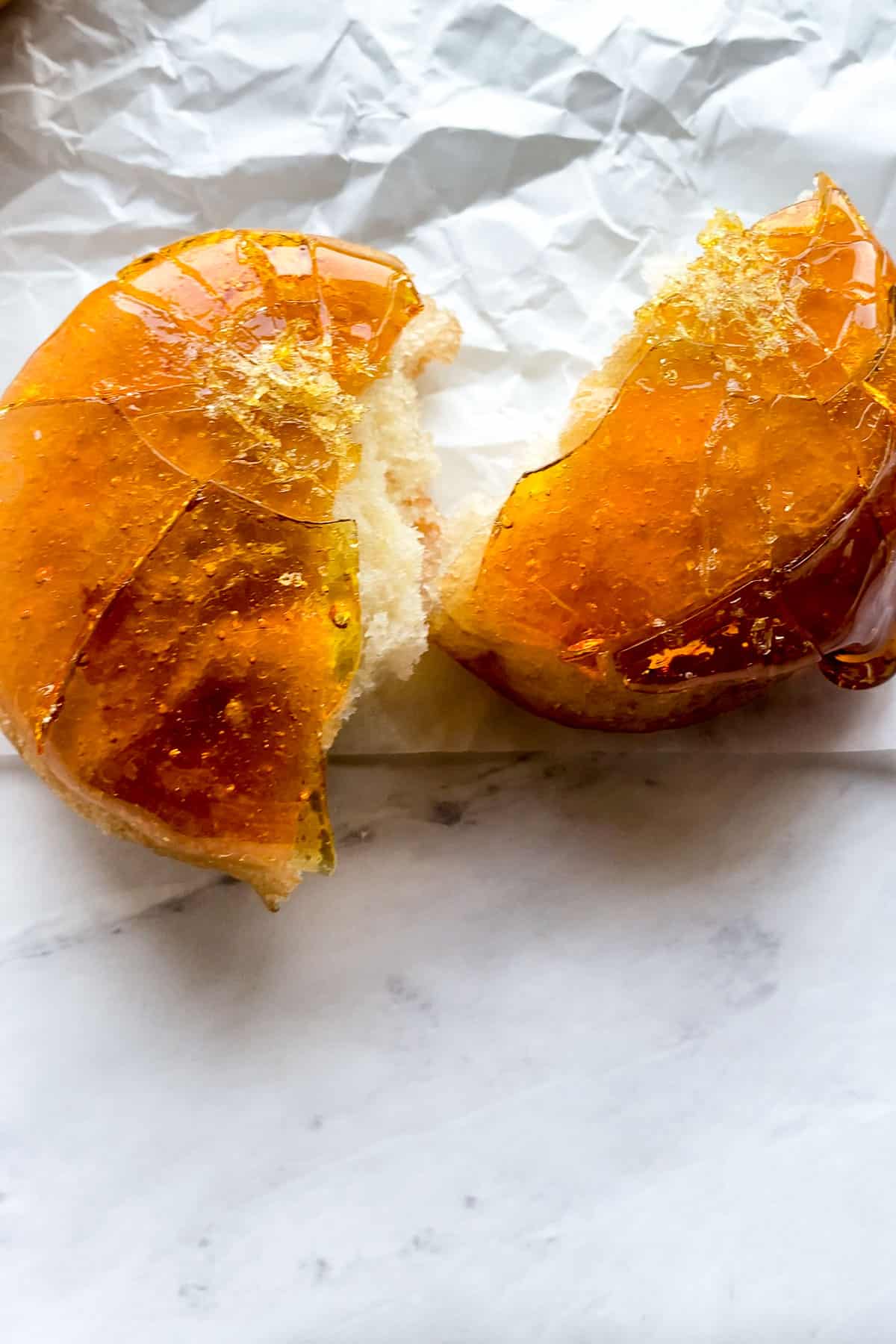
All you'll need to make the hard caramel are sugar and water. This is optional, but adding a few drops of lemon juice or a pinch of citric acid powder will prevent crystallization.
I'd highly suggest using a thermometer if you're not too familiar with the candy-making stages of sugar.
🥣 How to Make Vegan Crème Brûlée Doughnuts
You can make the pastry cream a few days ahead, or during the second proof if you'd like to use it immediately.
Make the Egg Replacer:
- Mix the aquafaba with cornstarch and set aside.
Bloom the Yeast:
- Mix the yeast with lukewarm water and 1 teaspoon of sugar; set aside until frothy.
Knead and First Proof:
- Place all dry ingredients (flour, sugar, salt) into a large bowl and make a well in the center. Pour in the aquafaba & cornstarch mixture, soymilk, and yeast mixture.
- Mix with a wooden spoon until the dough somewhat comes together. If you want an easier time kneading, let this coarse mixture rest for 30 minutes to autolyze.
- Knead for 10 minutes by hand until smooth, or 5 minutes with dough hook with a stand mixer. Add the softened vegan butter and knead for another 2 minutes to combine.
- Tear a piece of the dough and check if it passes the windowpane test. When the dough is stretched, you should be able to see light through it without the dough tearing. Otherwise, keep kneading to form more gluten bonds.
- Cover with cling wrap and set aside until doubled in size.
- This step is optional, but I'd highly recommend gently deflating, reshaping, then refrigerating the dough overnight after the first proof. Chilling the dough overnight develops more flavor and makes it a lot easier to work with the next day.
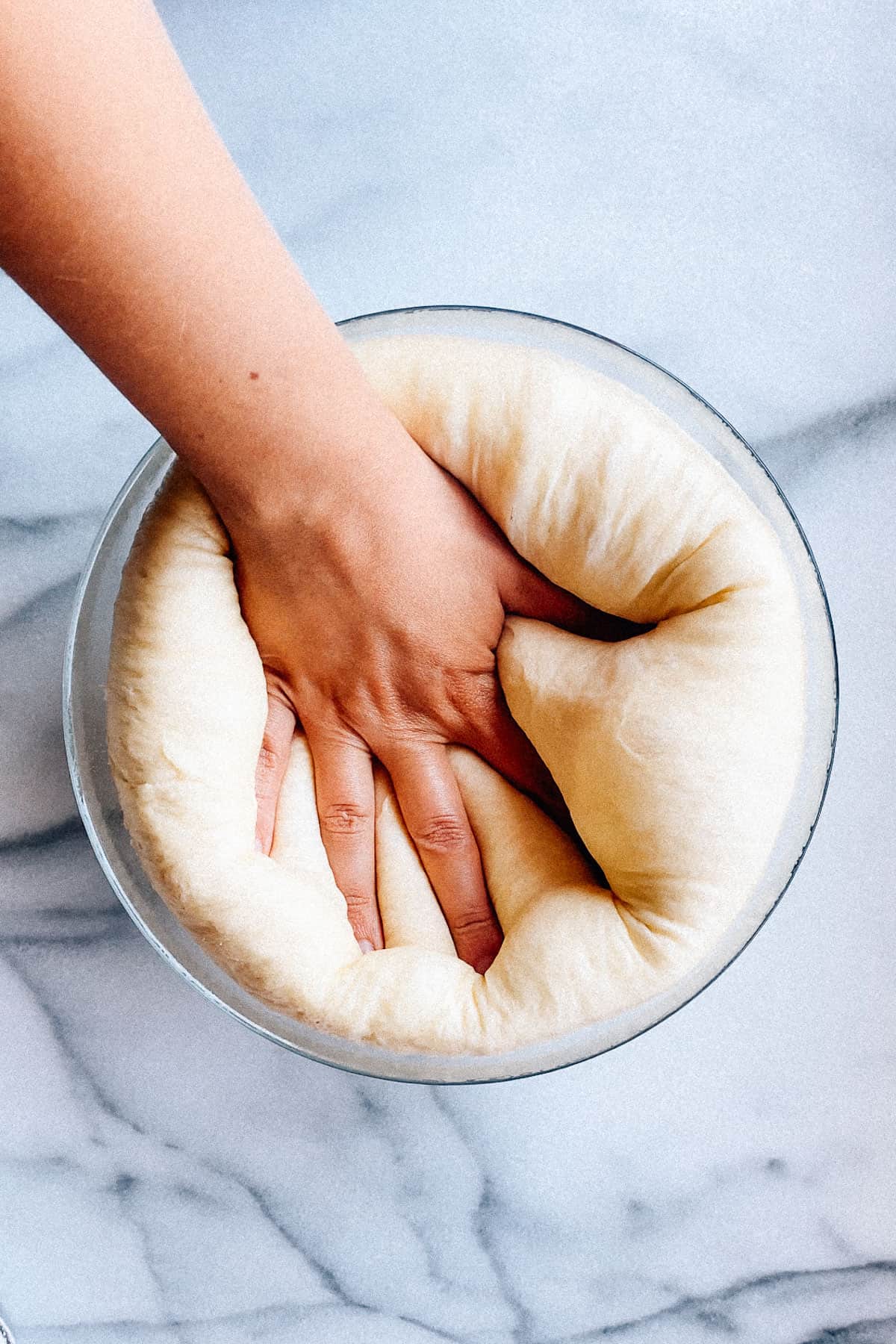
Roll and Cut:
- Lightly flour a working surface and place the dough. Gently knead, tap with a rolling pin, and divide into halves. Cover the piece you’re not using with cling wrap.
- Roll out the dough to ½” thickness and cut with a 3-inch, sharp doughnut or biscuit cutter. Make faint indentations with the cutter first to maximize the number of donuts.
- Re-roll the leftover dough, let rest for at least 30 minutes, and repeat—only once.
- If making filled donuts without a hole, you may also divide the dough into equal portions and roll them into smooth balls instead of cutting them.

Second Proof and Dry:
- Place each donut onto an individual small piece of parchment paper (4-in by 4-in) and place them onto baking sheets. Put the trays in an oven (that's off) and place a bowl of boiled water next to them. Close the oven door. The steam will prevent skin from forming on the donuts. Alternatively, you can cover the cut donuts with cling wrap.
- Repeat the cutting and proofing processes for the remaining piece of dough.
- Let the cut donuts rise for 15 minutes to an hour, depending on your kitchen's climate. Gently poke a cut piece of dough with your index finger and observe. If the indentation stays, your dough is properly proofed and ready to be fried. If the indentation immediately returns to the surface and disappears, you'll need to proof for longer.
- When the pieces are properly proofed, take them out of the oven (or remove cling wrap) to dry off the skin for a few minutes.
Fry:
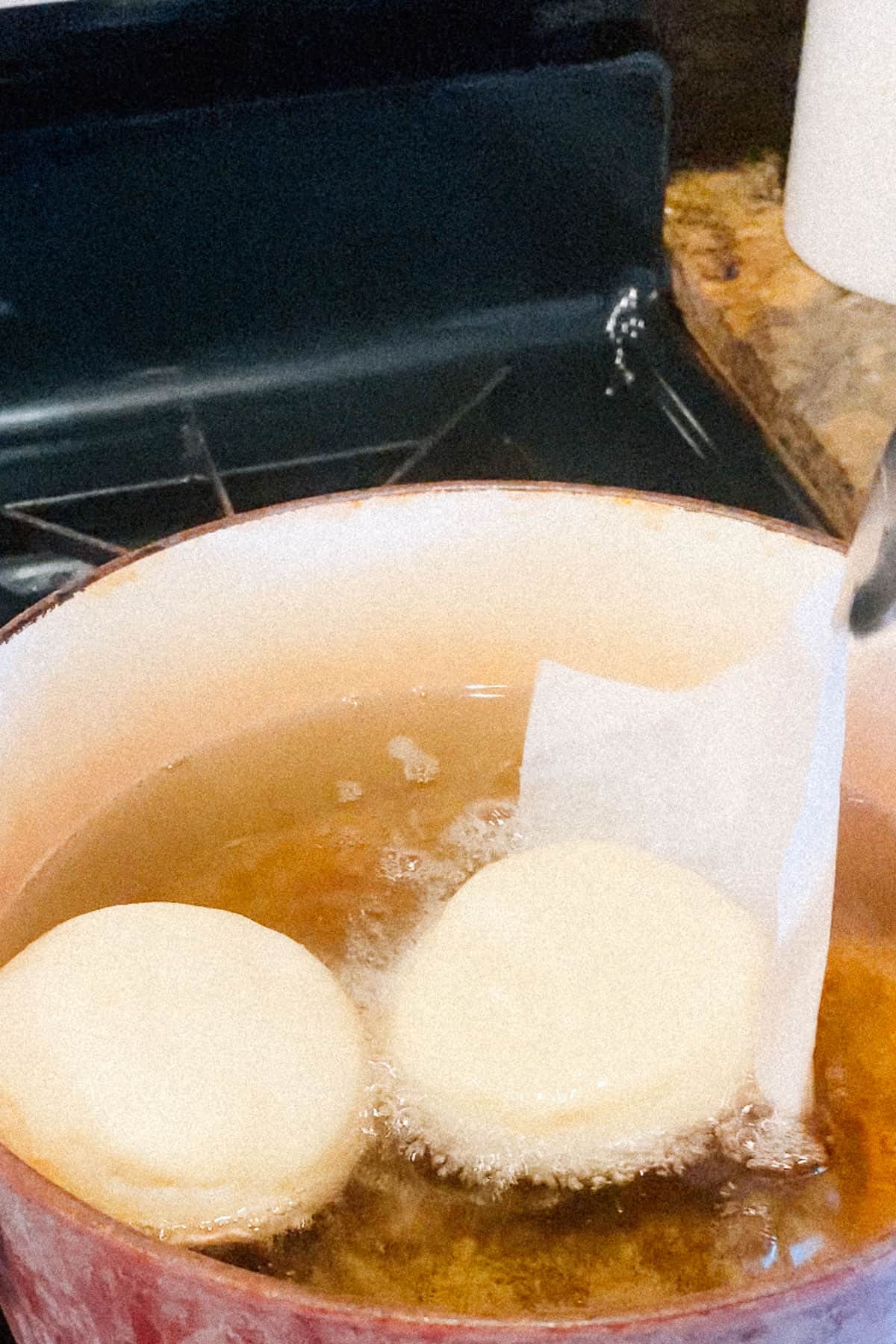
- Start heating the frying oil as soon as the first batch of dough is cut to minimize the chances of overproofing. Pour vegetable oil into a heavy-bottomed pan at least 2-3 inches high and checking with a thermometer, heat to 375ºF.
- Test with a donut hole—they should turn golden brown in 30-45 seconds on each side. Make sure to start frying the batch you started proofing first.
- Place 2 or 3 donuts into the frying pan at a time along with the parchment paper. Remove the parchment paper after a few seconds with tongs.
- Let the underside take on a golden brown color (about 45-60 seconds) then turn and fry the second side. Be conservative with the color: when the frying oil drains off the donut, it will seem darker. Chopsticks or a Danish dough whisk are very helpful when turning the donuts.
- Remove fried donuts with a steel mesh spider and transfer them onto paper towels. Let the donuts cool on a wire rack before filling & dipping them into caramel.
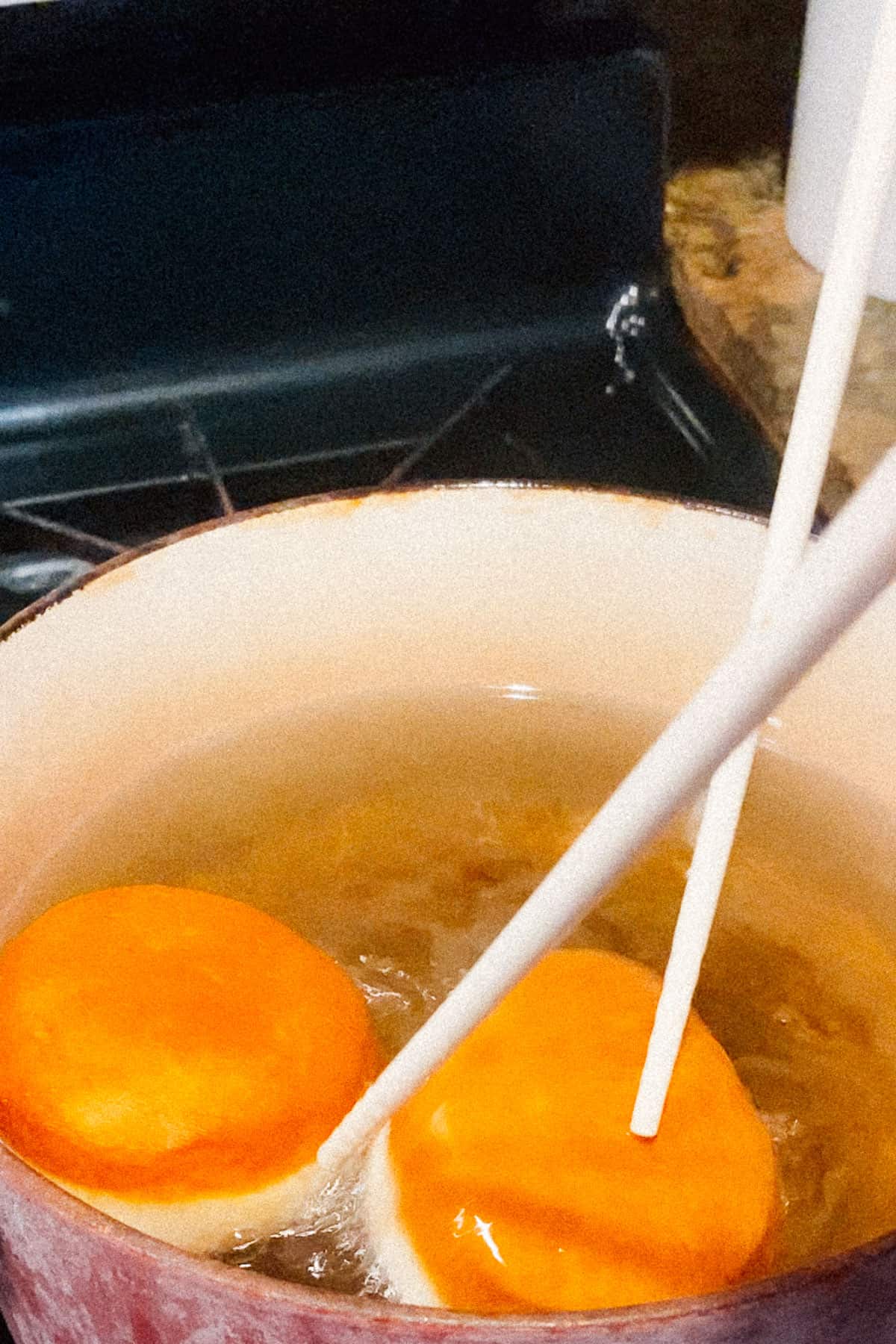
Fill the Donuts:
- Once the donuts are cool enough to handle, poke a hole in the side using a chopstick. Move the chopstick around inside to make sure there's enough space for the filling.
- Pour your pastry cream into a piping bag and fill the donuts.
Make the Caramel:
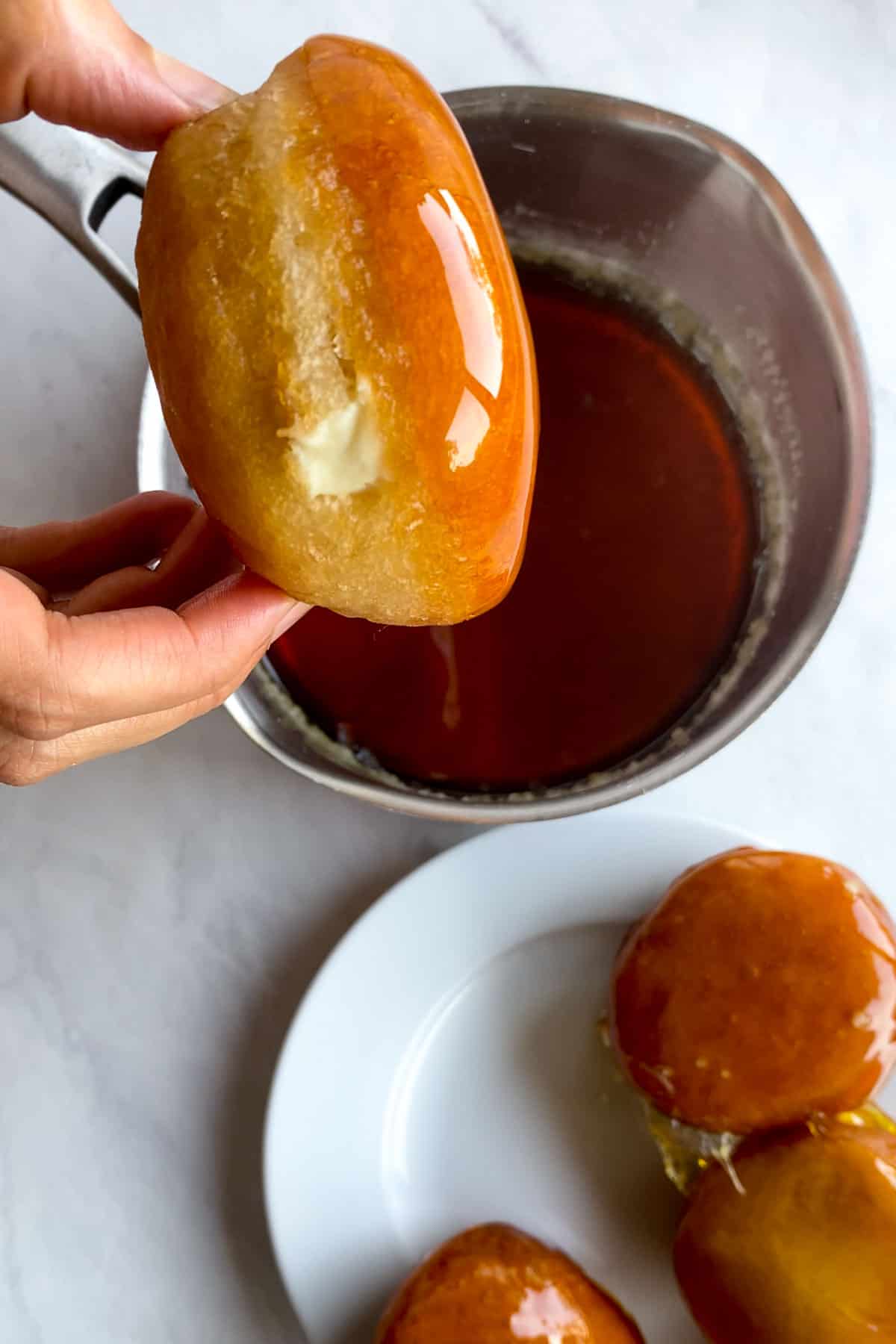
Mix the sugar, water, and lemon juice in a small saucepan and heat on low-medium heat to 350ºF (medium-dark amber color).
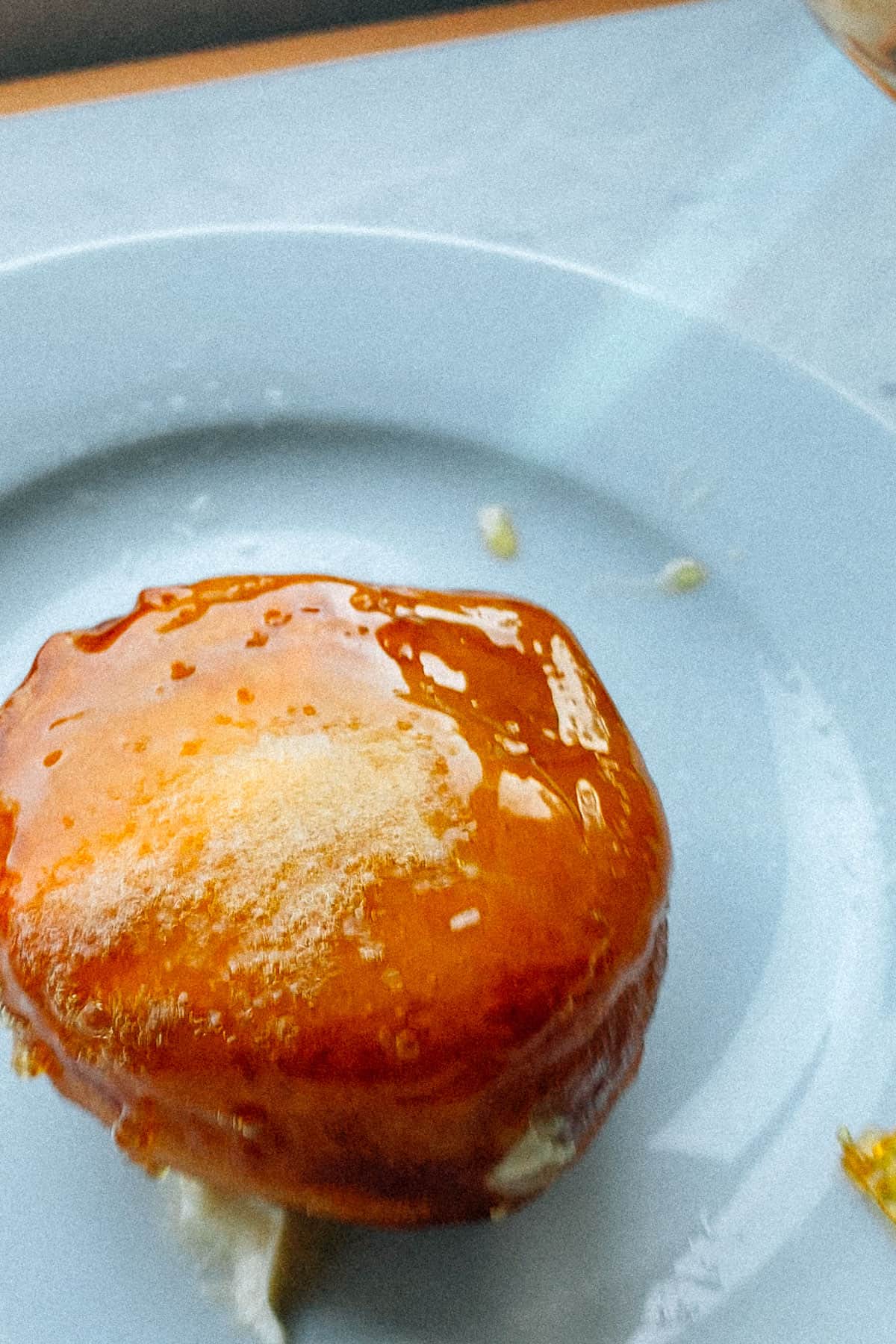
Dip donuts into warm caramel (careful here!) and set aside to cool. Alternatively, blow torch the tops before serving.
💫 Tips
- These donuts are best enjoyed on the very same day you make them. To eat on the next day, make sure to fill & dip into caramel right after cooling and keep it at room temperature in an airtight container. You may also freeze fried donuts individually and thaw, fill, and dip them into caramel when ready to eat.
- The most important thing to remember is to use a scale! With as many ingredients and a yeasted dough, this is the only way to make sure you're following the recipe.
- Times for kneading and proofing are estimates. Go for the windowpane and poke tests to judge the next steps.
- For more raised donut recipe details and troubleshooting suggestions, check out this glazed yeast donut post.
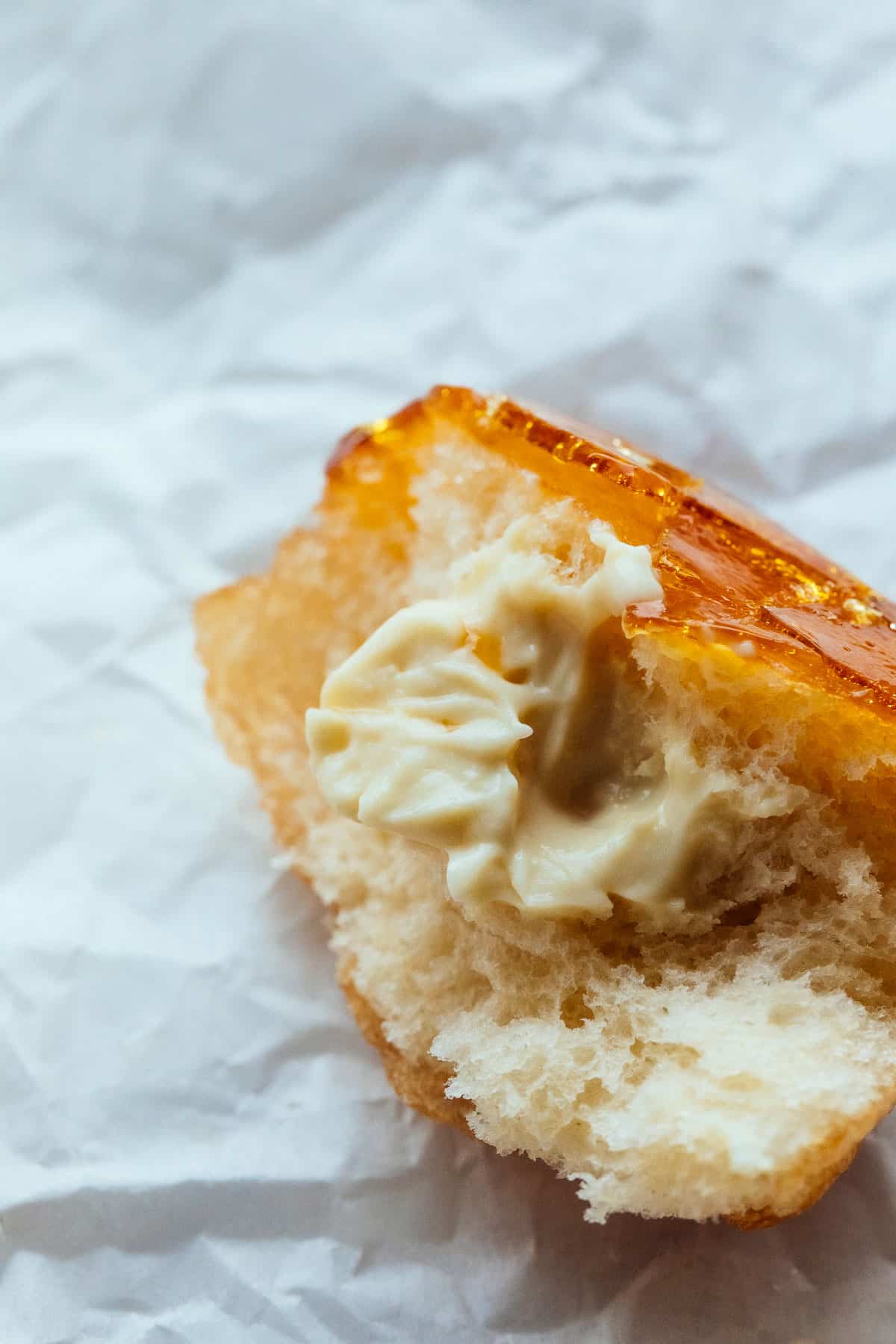
🍩 Variations
Not sure you like the idea of a cracking sugary top on your donut? I got you! Try out these delicious Boston cream donuts with a chocolate glaze instead.

OR go 100% classic with this Krispy Kreme glazed donut copycat recipe!

And in case yeasted, fried doughnuts sound intimidating—you can always dip cake doughnuts into the caramel to get your "cracking" fix. You won't be able to fill cake donuts with pastry cream, but you can cut them horizontally into halves to place the custard that way.
❓ FAQs
Crème brûlée doughnuts are raised doughnuts filled with custard and topped with a crunchy caramel glaze.
The pastry cream in the recipe is very easy to make, but you can absolutely use a tried and trusted pudding mix in a pinch.
They won't be the same, but you can still dip cake doughnuts into the caramel to get your "cracking" fix. You won't be able to fill cake doughnuts with pastry cream, but you can cut the doughnuts horizontally into halves to place the custard that way.
Usually, no. The dough and the custard filling often both contain dairy and/or eggs. You can find vegan crème brûlée donuts at some vegan donut shops (such as Donut Friend in Los Angeles). You can also easily make homemade, veganized versions!
Check out this master post on troubleshooting yeasted doughnuts.

Did you make this vegan crème brûlée doughnuts recipe? I'd love to hear about it! Please comment and leave a star🌟 rating below. This helps me run Aegean Delight and I always appreciate it 🙂
Print📖 Recipe
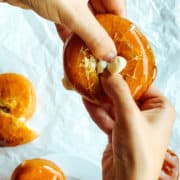
Vegan Crème Brûlée Doughnuts with Vanilla Custard
- Total Time: 5 hours and 30 minutes
- Yield: 16 Donuts 1x
- Diet: Vegan
Description
These vegan crème brûlée doughnuts are what dreams are made of! Filled with silky smooth vanilla custard and topped with a crunchy caramel glaze, you'll have so much fun cracking and digging into these delicious donuts!
Ingredients
Doughnut:
- scant ½ cup (100 ml) aquafaba
- 3 tablespoons (22.5 g) cornstarch
- 2 teaspoons (5 g) instant yeast
- scant ½ cup (100 ml) water, lukewarm
- pinch of sugar (to mix with yeast)
- 4 cups (500 g) all-purpose flour
- ⅓ cup (65 g) sugar
- 1 teaspoon (6 g) table salt
- ⅔ cup (165 ml) soy milk
- ⅓ cup (80 g) vegan butter, at room temperature
- 3+ cups vegetable oil for frying
Filling:
- 2 x vegan pastry cream (double the original recipe)
Caramel:
- 1 ½ cup (300 g) sugar
- ½ cup (125 ml) water
- 1 teaspoon (5 ml) lemon juice
Instructions
Make the Egg Replacer:
- Mix the aquafaba with cornstarch and set aside.
Bloom the Yeast:
- Mix the yeast with lukewarm water and 1 teaspoon of sugar; set aside until frothy.
Knead and First Proof:
- Place all dry ingredients (flour, sugar, salt) into a large bowl and make a well in the center. Pour in the aquafaba & cornstarch mixture, soymilk, and yeast mixture.
- Mix with a wooden spoon until the dough somewhat comes together. If you want an easier time kneading, let this coarse mixture rest for 30 minutes to autolyze.
- Knead for 10 minutes by hand until smooth, or 5 minutes with dough hook with a stand mixer. Add the softened vegan butter and knead for another 2 minutes to combine.
- Tear a piece of the dough and check if it passes the windowpane test. When the dough is stretched, you should be able to see light through it without the dough tearing. Otherwise, keep kneading to form more gluten bonds.
- Cover with cling wrap and set aside until doubled in size.
- This step is optional, but I'd highly recommend gently deflating, reshaping, then refrigerating the dough overnight after the first proof. Chilling the dough overnight develops more flavor and makes it a lot easier to work with the next day.
Roll and Cut:
- Lightly flour a working surface and place the dough. Gently knead, tap with a rolling pin, and divide into halves. Cover the piece you’re not using with cling wrap.
- Roll out the dough to ½” thickness and cut with a 3-inch, sharp doughnut or biscuit cutter. Make faint indentations with the cutter first to maximize the number of donuts.
- Re-roll the leftover dough, let rest for at least 30 minutes, and repeat—only once.
- If making filled donuts without a hole, you may also divide the dough into equal portions and roll them into smooth balls instead of cutting them.
Second Proof and Dry:
- Place each donut onto an individual small piece of parchment paper (4-in by 4-in) and place them onto baking sheets. Put the trays in an oven (that's off) and place a bowl of boiled water next to them. Close the oven door. The steam will prevent skin from forming on the donuts. Alternatively, you can cover the cut donuts with cling wrap.
- Repeat the cutting and proofing processes for the remaining piece of dough.
- Let the cut donuts rise for 15 minutes to an hour, depending on your kitchen's climate. Gently poke a cut piece of dough with your index finger and observe. If the indentation stays, your dough is properly proofed and ready to be fried. If the indentation immediately returns to the surface and disappears, you'll need to proof for longer.
- When the pieces are properly proofed, take them out of the oven (or remove cling wrap) to dry off the skin for a few minutes.
Fry:
- Start heating the frying oil as soon as the first batch of dough is cut to minimize the chances of over-proofing. Pour vegetable oil into a heavy-bottomed pan at least 2-3 inches high and checking with a thermometer, heat to 375ºF.
- Test with a donut hole—they should turn golden brown in 30-45 seconds on each side. Make sure to start frying the batch you started proofing first.
- Place 2 or 3 donuts into the frying pan at a time along with the parchment paper. Remove the parchment paper after a few seconds with tongs.
- Let the underside take on a golden brown color (about 45-60 seconds) then turn and fry the second side. Be conservative with the color: when the frying oil drains off the donut, it will seem darker. Chopsticks or a Danish dough whisk are very helpful when turning the donuts.
- Remove fried donuts with a steel mesh spider and transfer them onto paper towels. Let the donuts cool on a wire rack before filling & dipping them into caramel.
Fill the Donuts:
- Once the donuts are cool enough to handle, poke a hole in the side using a chopstick. Move the chopstick around inside to make sure there's enough space for the filling.
- Pour your pastry cream into a piping bag and fill the donuts.
Make Caramel & Assemble:
- Mix the sugar, water, and lemon juice in a small saucepan and heat on low-medium heat to 350ºF (medium-dark amber color).
- Dip doughnuts into the saucepan with the warm caramel (careful here!) and set aside to cool. Alternatively, blow torch the tops before serving.
Notes
If possible, please use a scale.
These donuts are best enjoyed on the very same day you make them. To eat on the next day, make sure to fill & dip into caramel right after cooling and keep it at room temperature in an airtight container. You may also freeze fried donuts individually and thaw & dip them into caramel when ready to eat.
Times for kneading and proofing are estimates. Go for the windowpane and poke tests to judge the next steps.
Nutrition information is an estimate.
- Prep Time: 1 hour
- Proof Time: 3 hours and 30 minutes
- Cook Time: 1 hour
- Category: Dessert
- Method: Fry
- Cuisine: Universal
Nutrition
- Calories: 295




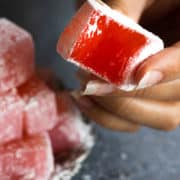

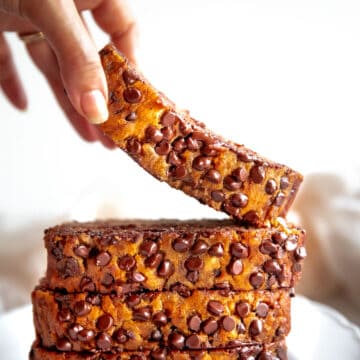

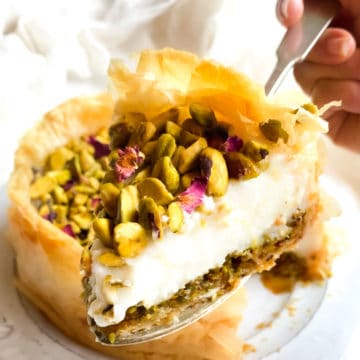
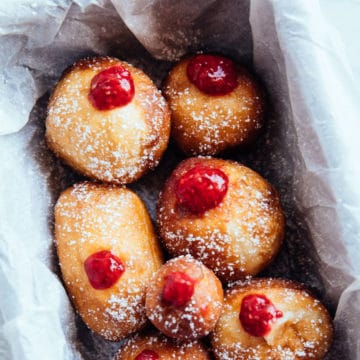
Shannon
Came across your wonderful photos on reddit and immediately made the dough and custard. I’ll make the rest tomorrow and update. Custard tastes amazing. I don’t have a stand mixer so dough was a little tiresome to knead and get smooth but not too bad. Thank you!!!
Shannon
Made the entire recipe on Wednesday, turned out superb! Very light yeast doughnuts. I would recommend being light handed with the caramel otherwise it is too hard. We don't own a blowtorch but next time I want to try that too. thanks again, Gönül
Gönül
Hi Shannon, thanks so much for trying out the recipe and the update! I agree, the caramel can be overpowering if too thick.
Cheers,